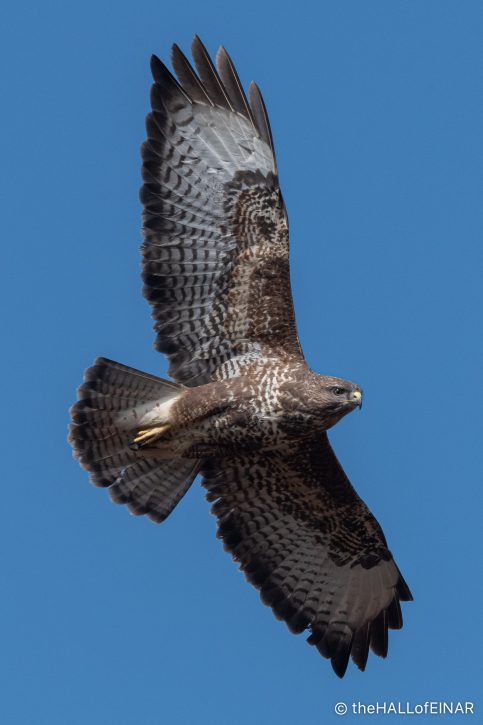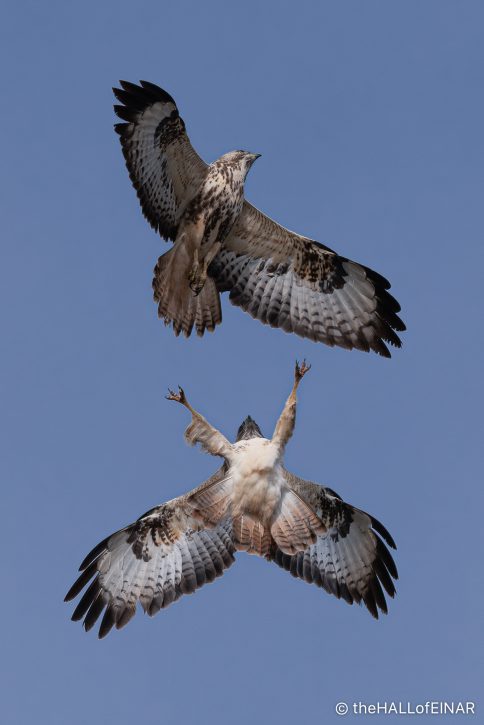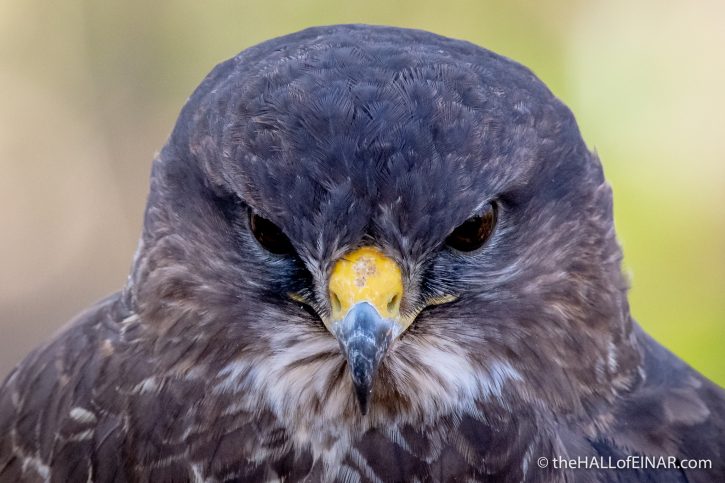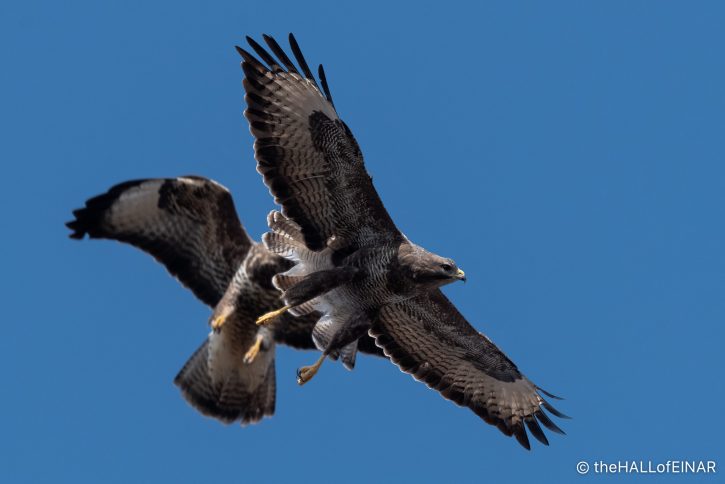Looking up for Buzzards
There are several pairs of Common Buzzards in my local area. You may have seen them perched on high posts or circling high in the sky. Buzzards are large brown birds of prey with sharp beaks, sharp talons and an even sharper stare. They are now the most common bird of prey in the UK, with somewhere between 60 and 80,000 breeding pairs. The UK’s Buzzard population has quadrupled since the 1970s, when persecution and poisoning was commonplace. Their recovery is a real wildlife success story. Buzzards can live for 25 years and are most at home in thickly wooded valleys, hills and livestock farms.

Buzzards pair for life, and a pair keep a territory in which they hunt, roost and nest. They are in the skies at this time of year, with epic territorial battles and courtship displays going on above our heads.

It’s important they defend their territory so they have enough food for their chicks in summer and themselves in winter. They fly with patient wingbeats, soaring in circles ever higher until it’s difficult to see them. When they’ve reached a great height they set off on patrol, looking for food with their exceptional eyesight trained on the ground far below. If they happen to see a rival Buzzard intruding into their territory they let out sharp cries and the males are particularly keen to escort intruders out of their airspace.
Buzzards are natural recyclers, eating roadkill and carrion, but they will eat worms and large insects when their other food is in short supply. They will also ambush the occasional unwary small rabbit or mouse. They have also been known to catch frogs and tear their legs off, which is always accompanied by gasps and squeals if there are people nearby.

More people are recognising how beautiful and interesting Buzzards are, and appreciating seeing them, and the recovery of their population means they are now a familiar and welcome fixture of roadsides and fields. Things are looking up for Buzzards and, at this time of year, so should you.
